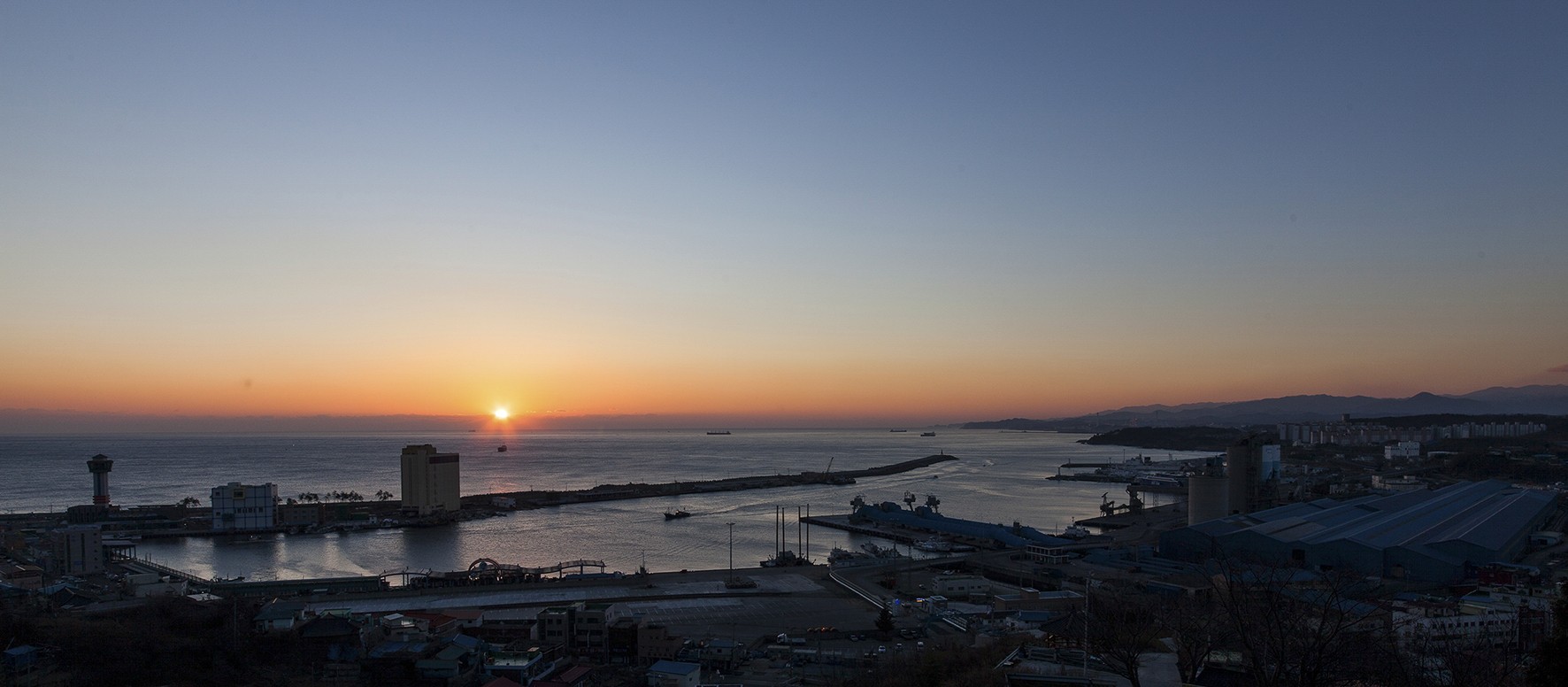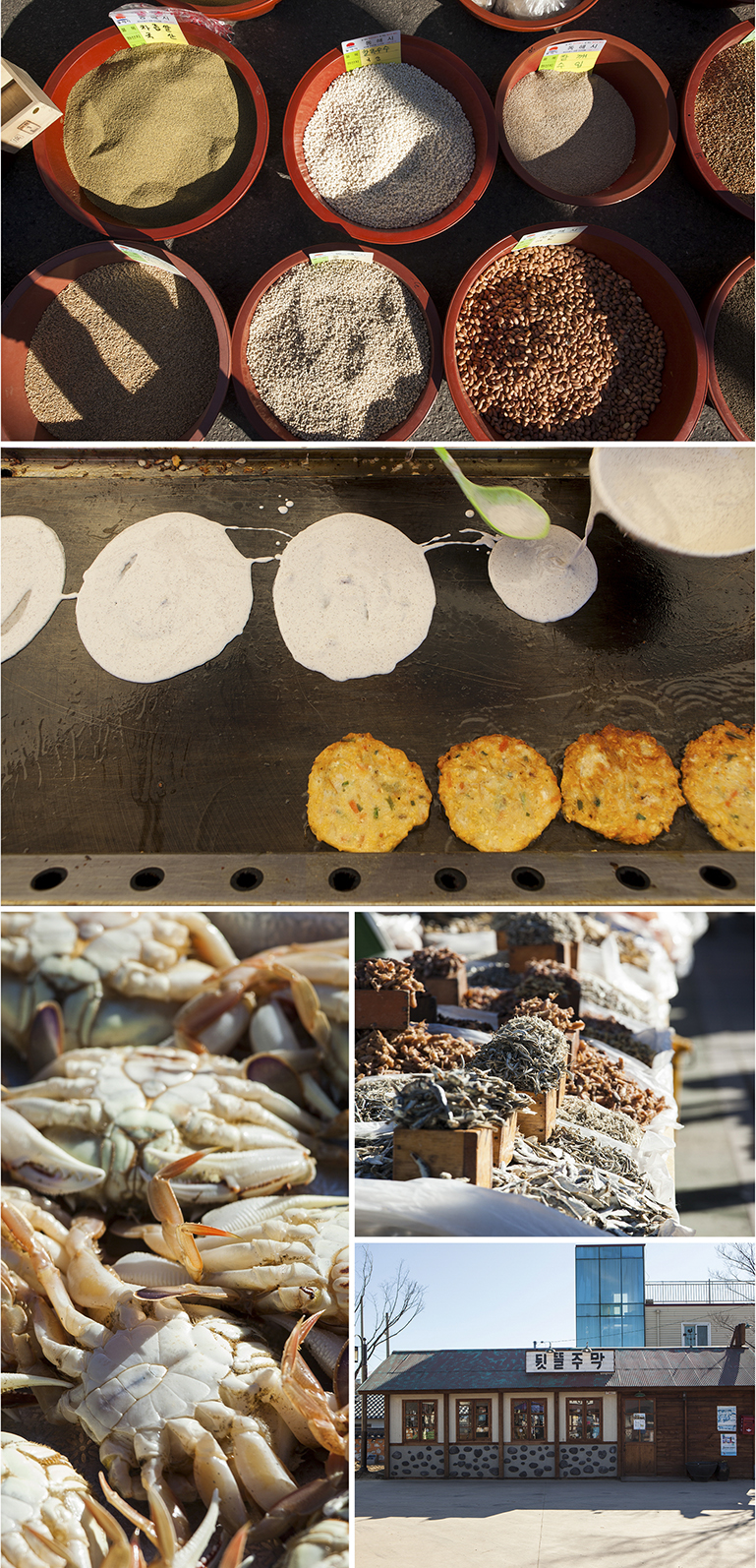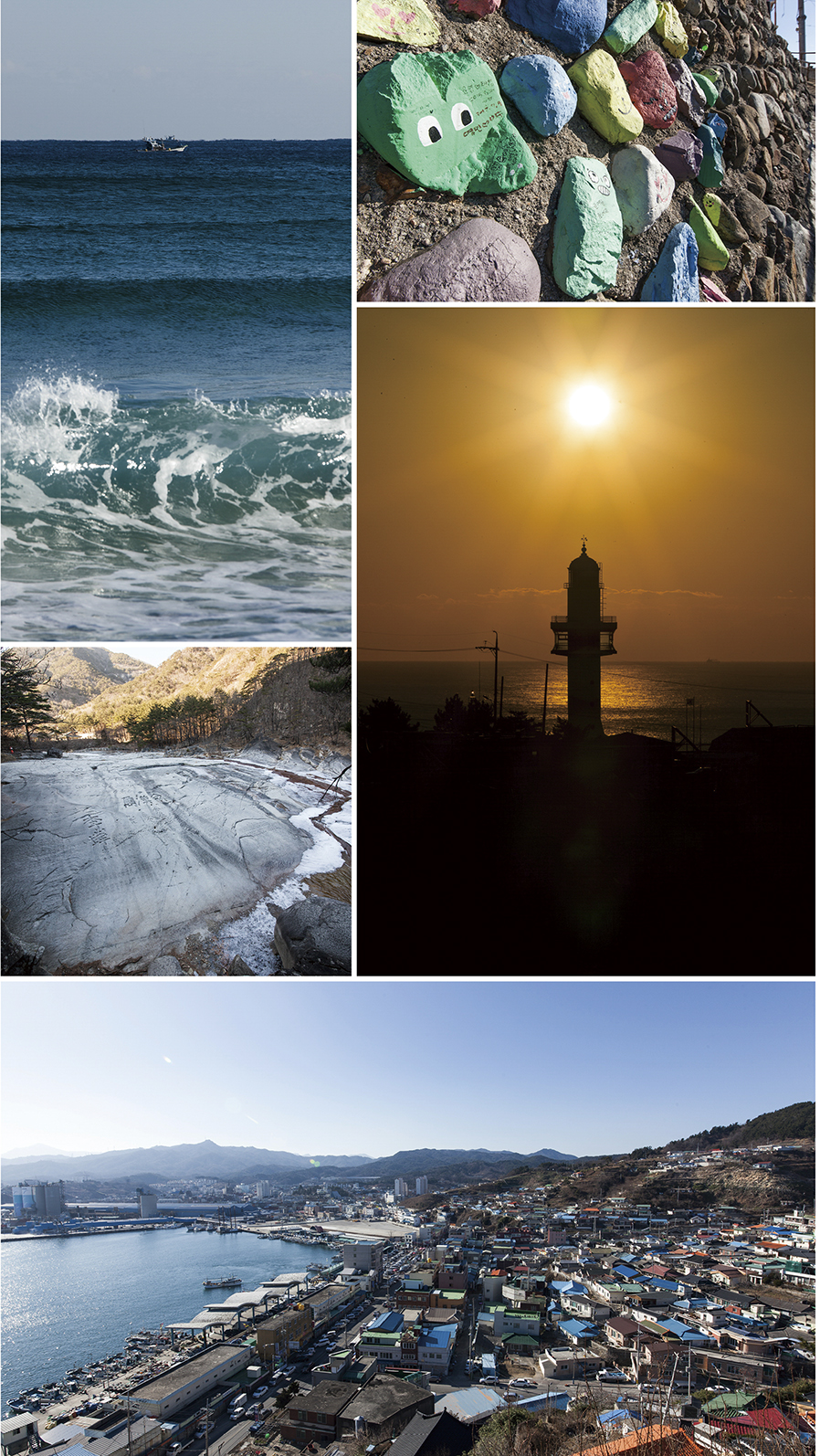한식 읽기 좋은 날
Vol 47. A New Day, Clean Color
Donghae, A Village Full of New Hope and New Stories
Korean Food Tour
I remember saying “Let’s go to Donghae(the East Sea),” whenever I wanted to see the ocean.
Many people still call the city on the east coast of Korea, “Donghae.” I returned from Donghae, Gangwon-do, which becomes livelier ahead of the Lunar New Year, with the unchanging values and beauty of life, and the overwhelming thrill of hope.

I have a vague memory of going to the market, holding my mother’s hand, and chatting giddily from joy after getting a sweet hotteok(syrup-filled pancake) on a market day. At the time when there weren’t many snacks, markets were the best food court and playground for children as they were filled with eye candies. If you were to buy a sack of apples, you could get better and cheaper products depending on your legwork and bargaining skills. The deal could only be made after going through the process of looking at and touching the product several times. Nowadays, you can shop online, and products can be delivered to your home with a single click of the mouse. It's even cheap and fast as it saves you time and effort. Since there are large stores with different names lined up, and you can buy all kinds of daily necessities even at convenience stores that are open 24 hours nowadays, the experiences of those days remain only as precious memories. Perhaps, this is why I miss the traditional market where there were friendly bargains between people.
While traditional markets are disappearing, Bukpyeongjang Market stands unchanged in Donghae City. As the largest traditional market in the Yeongdong region and one of Korea’s three major markets with 200 years of history, there are still many products and it draws many people. The place is full of affection. When the 3.8 market is open 6 times a month(on 3rd, 8th, 13th, 18th, 23rd, and 28th), not only local residents but also people from nearby areas come to the market by hiring buses. Tourists who have fond memories of the place also come to the market. The items for sale are also so diverse that it is impossible to count them all. Due to the market’s geographical advantage of being so close to the sea, the market is full of fresh seasonal seafood, as well as fruits and vegetables brimming in a basket waiting for a bargain, various grains contained in a doe(=1.8 liter, a square wooden container equivalent to the unit) always coming with an extra, farming tools, and daily necessities. When you walk on the street packed with the nutty scent from roasting peanuts and extracting sesame seed oil, you will feel hungry. Now, you have a problem because there are so many types of food to choose from: hot janchiguksu(banquet noodles), memiljeonbyeong(buckwheat crepe), gamjajeon(potato pancake), memilmuk(buckwheat jelly), eomuk(fishcake), gukhwapang(red bean paste filled bun in a shape of chrysanthemum), ppeongtwigi(rice puffs), etc. There are even taverns that serve food with a bowl of makgeolli, and restaurants selling 40-50-year-old, market-style gukbak(beef and rice soup).
Bukpyeongjang Market is a charming location where goods come and go, and where thousands of people share warmth and affection. It seems that the visitors exchange their abundance and hope in this place, where you experience nothing but warm kindness.

Food in Donghae becomes more abundant in the winter. Here are some of the tastes of Donghae that will satisfy you if you go on a gastronomic trip.
There is a variety of food in Donghae from lance-fish, snow crab to fresh raw fish, but there is a delicacy that you must try. Gomchitguk(moray eel soup), made with a fish called “mulgom” or “gomchi(moray)” because it looks like a bear, is a delicacy that tastes better than it looks. It is an essential hangover breakfast dish for habitual drinkers who drank with fresh sliced raw fish the night before. Gomchitguk that is made by adding plenty of kimchi, unlike regular maeuntang(spicy fish stew), boasts of a refreshing and spicy broth. The slippery texture of the fish, unlike other types of fish, seems unfamiliar at first, but you will soon be hooked on its soft texture that melts in your mouth. The price went up to about KRW 15,000 a dish due to the decrease in catch lately, but it will be worth your trip to Donghae. There are rows of restaurants where you can enjoy gomchitguk around Mukho Port.
If you want to beat the heat with hot food in the summer, mulhoe(cold raw fish soup) eaten in the winter as yihanchihan(以寒治寒: fighting cold with cold) is the best among the winter delicacies. When you eat mulhoe, which is served with abundant raw fish cut with bones and topped with plenty of vegetables in lightly-frozen broth, you will be surprised at least three times with its crunchy texture, its sweet and sour taste, and its cooling sensation that will relieve you inside.
If you go near the Donghae Jungang Market, you will see many people queuing up to buy daegaepang(snow crab bun). At first, I thought it was an imitation of bungeopang(fish-shaped bun filled with red bean paste) that just changed its shape to snow crab, and regarded the people lining up strange because they were only buying a snack. However, when I ate it, I had a valid reason to wait in a long line. Daegaepang, which is made by making dough with the flesh and snow crab and red snow crab shells with flour, has a different taste and flavor. Though it is made with flour, it tasted light and nutritional, as the filling can be changed from the basic red bean to walnut or blueberry. Since I was full with gomchitguk and mulhoe, I only had one but it still lingers in my head so there is something special that set it apart from other snacks. It won’t be strange to hear someone saying they are going to Donghae to eat daegaepang sooner or later.


Donghae City, a small town on the east coast, is located slightly below Sokcho, Gangneung, and Jeongdongjin, and above Samcheok. When you go on a trip to Donghae, you don’t have to worry about going to the mountains or to the sea. Though it is small in size, you won’t notice the passing of time, as there is a famous mountain that boasts an outstanding scenery than anywhere else in Donghae, and you can see the beach with an impressive panoramic view or a superb view of strange rocks and stones.
Mureung Valley is also called Mureungdowon(Shangri-La) because it is said that the gods played there. “What’s so good about a mountain in the middle of winter?” I hesitated for a while because I preferred the sea to the mountains. Having come this far, I wanted to find out if it was a really a place good enough for gods to play, so I headed to Mureung Valley. The place where the water flowing along the mountain range harmonizes with the magnificent view of Dutasan Mountain and Cheongoksan Mountain in the distance to form a picture – after about a 10-minute hike, I came upon a wide rock, which is filled with the writings of a master calligrapher, and painters, who had visited this place in the past, are engraved, creating a true scenery. Here, there is a stone carving(1571) of Yang Sa-eon, who is famous as an outstanding calligrapher, making it even more valuable. If you look at the view composed of strange rocks and natural scenery, you can fully understand why ancient calligraphers used to play here by carving their writings.
There are more options for those who love the sea. Mangsang Beach, with its impressive white sand and open sea in front of the dense pine forest, has a beautiful scenery of a clean beach. When you stand facing the ocean at Mangsang Beach in the quiet winter, you feel like your insides are wide open. Chotdaebawi Rock, which is familiar to us as it appears as the background in the first line of the Korean national anthem, is located on Chuam Beach. Chotdaebawi Rock, standing toward the sky above the sea, seems to grant our wishes like mothers praying for the well-being of their children with a lit candle. The two strange rocks standing next to each other called Hyeongjebawi Rock(brothers rock) look beautiful harmonized together. This place, which is also one of Korea’s representative sunrise spots, is often visited by photography enthusiasts to take pictures of the sun rising above Chotdaebawi Rock or between Hyeongjebawi Rock.

Since you are close to the sea, it is a must to experience the unique culture of a fishing village. It is said that Mukho was once the number one port town on the east coast with enormous amounts of squid and pollock. In Mukho Port, fish were piled up every day so the ground never dried out, and because there was a coal factory nearby, the coal powder was blown away when it rained, and the mud became black. In Mukho, which means “the gray sea,” it is said that the black dirt road was so muddy that there was a funny saying, “One can live without a wife or husband, but one can't live without boots.”
Mukho Lighthouse, located at the top of Nongoldam-gil, is also a famous attraction of Donghae. The beautiful scenery allows you to see the vast sea at a glance, and it has been the backdrop used in numerous movies and dramas by era. You can walk around and enjoy pretending to be the main character in movies and dramas, or enjoy a cup of hot tea at a café with a great view located just below Mukho Lighthouse, while looking at Donghae. The Mukho ocean viewed from the café brings expectation that hope will come again to Mukho, and that it will listen to my wishes that I repeat in my head while looking at the cool sea.
When the sun goes down, you can wander the streets around Mukho Port, which has a rather grand name called Famous Raw Fish Dish Street. If you find a place that appeals to you, you can enjoy the day's journey with a plate of sliced raw fish from the East Sea. I was able to fill my mind and body with a rich, abundant energy of hope while meeting the beautiful nature and culture of Donghae, which I visited after leaving the old market. I wish that the hope I met in Donghae would spread longer and brighter.











